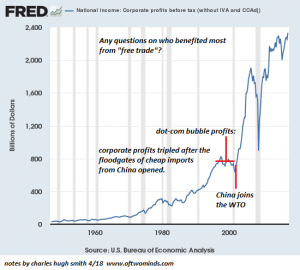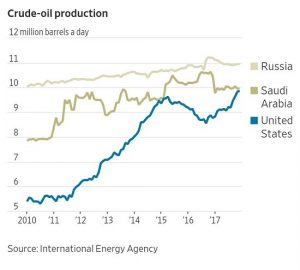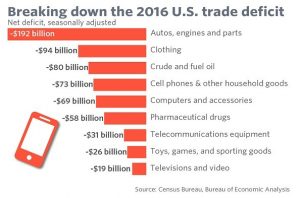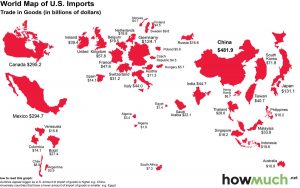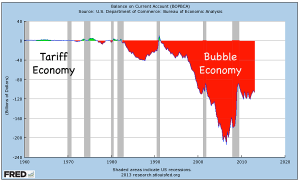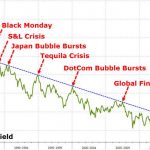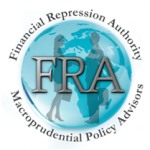
Download the Podcast in MP3 Here
FRA: Hi welcome to FRA’s Roundtable Insight .. Today we have Nomi Prins and Yra Harris. Nomi has worked on Wall Street as a managing director at Goldman Sachs and ran the international analytics group as a senior managing director at [Bear Stearns] in London before becoming an author. Now a journalists, public speaker and media commentator, she’s the author of 6 books. Her writing has been featured in the New York Times, Forbes, Fortune, The Guardian and The Nation among others. Yra as an independent trader, a successful hedge fund manager, global macro consultants training, foreign currencies, bonds, commodities and equities for over 40 years. He was also CME director from 1997 to 2003. Welcome Nomi and Yra.
NOMI: Thank you very much.
YRA: Thanks Richard.
FRA: Well Nomi is coming out with a new book to be released on May 1st. It’s titled Collusion: How Central Bankers Rigged the World. She focuses on five area, Mexico Brazil china japan and Europe and she’s actually scoured the world to write this. Visiting Mexico city, Guadalajara, Monterrey, Rio de Janeiro, Sao Paulo, Brasilia, Porto Alegre, Beijing shanghai, Tokyo, London, berlin and other cities throughout the united states. That’s a lot of traveling Nomi.
NOMI: That sounded like a lot of travelling when you said it Richard. Yes that happened.
FRA: Is that how it came about? Was it through these struggles that you gained this insight how did you get this inside also through your work?
NOMI: The insight itself yes it came from traveling on the ground and that was a result of really watching what happens since the financial crisis in terms of what the federal reserve has done and what other major central banks have done that we know about publicly in terms of advocating and creating and manifesting … Money policy as well as a quantitative easing or asset purchasing policy. It’s asset purchasing of bonds in the US, it’s the ETFs in japan, it’s corporate bonds in Europe are effectively a collaborative process that really had different effects for the major countries versus the more developing countries and also even as it was coming about in the wake of the financial crisis, had a lot of worries and criticisms been brought up about it. What I wanted to do is discover how those words and criticisms impacts on more of the developing countries. We’re part of the results of the Federal Reserve ECB Bank of Japan process of this particular policy. It was a combination of seeing what was going on and wanting to feel it and examine it and research it from the levels of those countries.
FRA: Is this collusion more of a hand off of a baton for example between central banks or is it actually central bank that are more in close coordination with each other?
NOMI: The main central bank that coordinated in the wake of the financial crisis and even before it became public knowledge in the fall of 2008. This was going on in the beginning of 2007 and throughout 2007 is that they worked together to for example have a lot of dollars in the market , in the central bank reserves system to be available in the case of a crisis. They kind of knew in advance what could be happening but to the public of course a particular federal reserve did this through Ben Bernanke. The face was, we’ve got this, there’s no housing crisis, nothing bad is going to happen, everything is fine. In reality central banks the major ones the G7 ones were already starting to work together to mitigate any potential liquidity or money crises that could result from any financial implosions. That was already going on but then once the financial crisis was in a bit of full mode in the fall of 2008 and the spring of 2009 those conversations became much more frequent, the types of coordinated policies amongst these banks became more frequent, the amounts of them more epic in terms of what was swapped between central banks. Like I’ll give you dollars you give Euros and so forth throughout the process to create a global tranquility on the outside that was really fabricated by these central banks. As the years went on different types of timing periods were used to sort of catalyze this type of collusion or group collaboration again. For example in 2012 when there was a more pronounced credit crisis in Europe and so far and it goes on to this day. If the fed raises rates a bit and it hampers the stock markets and all of a sudden there’s a lot of chaos or turbulence and the European central bank as adjusted will step up and say, “We’re are not touching our rates, our rates are good low where they are. We’re going to continue with our quantitative easing or a corporate buy in process so don’t worry.” That’s where the global collusion comes and of course if you’re outside of this main group of these central banks, you’re either acting with them or against them depending on what you need to do for the domestic situation in your own country. For example Brazil when it has high inflation had to do different managers relative to what the fed was doing but that also hurt it politically? A lot of different pools and studs came in that developed countries throughout this process.
FRA: Yra have you seen similar behavior between the central bucks from your observations?
YRA: Are you throwing fuel on my fire on what didn’t know. How do I know? (unintelligible) We’ve known each other 3 or 4 years but I’ve been discussing this with (unintelligible) for years. Nomi can I just ask you a question? Are you familiar with Bernard Connolly?
NOMI: I’m not. It sounds like I should be.
YRA: You ought to be yes. If you’ll give Richard (unintelligible) I’ll send you (unintelligible) We’ll talk about it later but Bernard Connolly who was at AIG London (unintelligible) He wrote a book called The Rotten Heart of Europe. Written in 1995.
NOMI: Wow, okay.
YRA: Everything that has happened. But because he was on the original group that put together the euro currency so what he saw behind the scenes is similar with what you’re discussing. I’ve come to call him a good friend. We talk. He’s kind of disappeared now for a while but he just needed to rest I think. I can’t wait to read your book but Richard you know that answer. The central banks have, as would I would say what’s going on in Europe especially. We saw with droggy this morning that press conference is one of the greatest acts of (unintelligible) Visitation I’ve seen since David Copperfield. He can dance it but you could see it in Europe, there’s basically been a coup d’état in which the ECB is running its monetary and fiscal policy. You can’t escape it and therefore they are all in this and tonight of course will hear from [Kuroda]. Not that they’ll be any change especially with the political problems of Prime Minister Abbey. It’s such a strong word. I’m not used to hearing the word collusion and it’s interesting that you use that word. I always shy away from it because if I can’t prove a conspiracy then I lose some of my credibility so I don’t like (unintelligible) But I love that you do use that word because I do think it is that. It makes me ask you the question Nomi right back to you and do you have some thoughts on the G30?
NOMI: I do and just to maybe circle back to the wording that’s a really good point to bring up because I mean I also shy away in my research and everything I talk about from the idea of conspiracy because to me even though it has lots of different definitions, the implies definition is that it’s something done inside of a dark corner to other outside groups and therefore it’s not out in the light. To me all of this has been pretty public it’s just that nobody is really or a few people you have of course (unintelligible) A few people have connected the dots. The term collusion and of course it’s used now constantly with respect to the US or Russia and the us elections and trump and Putin and whatever might not be going on with that it’s become a constant word in the vernacular and so it’s come to take up on itself more meaning. I think the collusion, the coordination, the collaboration and its parts of all of those things amongst the major central banks definitely it’s not intentionally being negative definitely was the way of artificially creating a veneer in the financial markets and for the banking systems throughout the world and in particular the largest private banks that are codependent upon each other and upon the liquidity that central banks provide them and look to them. As they did in the crisis and continually for support. That is this manipulation of markets by this huge outside fabricated source of capital really does fall under the definition of collusion because it was done in concert and because their perception around what central banks want their behavior to be and the actuality of how artificial it has been for the financial community and markets are at odds with each other.
YRA: Yeah I think (unintelligible) Sorry Richard. I think that’s absolutely perfect. Let me add just 1 piece to that puzzle. This colluding group is absolutely at odds with thee BIS in so many ways. You can go back to Bill White’s work (unintelligible) And how the BIS is taking a different view. Actually two years ago I went to see (unintelligible) Speak in Chicago and I asked him point blank question because being that he (unintelligible) I said now that you’re at the BIS what’s your view on the zero risk waiting for all sovereign debt? I said I understand what you believed when you are at the bank of Spain but has your views changed? He turned right around and said that’s really a good question. Yes I have a different opinion of it. I thought it so clarified the things that you’re exactly talking about. This group is totally at odds with what they BIS is (unintelligible) They are supposed to be the banker’s banker.
NOMI: Right and the BIS as you know has a lot of reports out on this as well as statements that the collusive fabrication over money and the cheaper negative interest rates the major global economies has had a very negative effect on the rest of the world. It’s had the effect of raise in wealth and equality. By raising equity prices and infusing more debt into the world which at some point will need to be paid off. Because equity prices and other assets prices have risen and people who don’t have that same access to them as the wealthier classes and the participants in those markets get left behind. They borrow more money in order to keep themselves afloat. Then their debt burdens are higher but they’re not participating in the outside of quantitative using (unintelligible) And so forth so it creates these chasms for citizens within the age of the countries and as well as between countries amongst the world. What I find the most egregious at odds, to use your term is that for example the Federal Reserve, all 3 of those should have passed chairs. From Ben Bernanke who started it to Janet Yellen to currently Jerome Paul just do not see any problem in what they’ve done. Same thing with the bank of England. They’ll see inequality has risen but they’ll say inequality it rises for lots of different factors. Who can say it’s because of this massively accommodative monetary policy we’ve just imposed for the last 10 years. But the numbers say it. These individuals (unintelligible) As you mentioned, they don’t see that. They put words around their actions that indicate they’re doing this for the greater good and the main economy and GDP and all sorts of other things. But in reality this money goes to the main participants in the asset market and it has the effect of raising those prices and making certain things look really Rosy and positive and it doesn’t go into the main economy. It can’t. It is tied up on the books of these central banks, so how can it possibly go into the main economy?
YRA: Richard (unintelligible) So perfect. If we go back to Jacksonville 2010 when Bernanke laid out what he was going to do with this portfolio balance channel that’s exactly what it was about. You could see it in real time and yet people said no (unintelligible) I was tongue and cheek asked how is this going to trickledown economics? I’m following this through we’re not even going to get trickle down because there is no separate expenditure coming out of this. This is truly asset price inflation and who controls and owns the assets. (unintelligible) In his book basically it was written by Bernanke in …
FRA: And I mean it can we delve into some examples. Nomi, from your book on, like these areas Europe, Japan, China, Brazil, Mexico. Can we go into some of the details that you’ve provided in the book?
NOMI: For example Mexico with each other issues right now, there’s Canada with the united states relative to trade agreement conversations had this issue in the beginning of the financial crisis which words that its economy is doing pretty well and it really was having decent actual growth and actual growth and a decent amount of multiple forms of foreign investment and so forth and it’s not like wedges were perfect but there was a sense of balance to an extent in the few years before the financial crisis hit. Then all of a sudden you have the US. banking system going crazy on toxic assets and fraud and crime and imploding the entire system and its reaction from the fed and so forth. At the time Ortiz who was the head of the central bank in Mexico said I’ve seen this play out in 1994 with a peso crisis. Where these are external movement, there’s a crisis. The currency gets crash. Certain companies that are contingent on trade between various borders get hurt, they fire people, the economy suffers and so forth and he actually went up to Washington and had a meeting with Ben Bernanke. A meeting that isn’t in Ben Bernanke’s memoirs at all. But was covered by the Wall Street journal and they said you really need to do something to install confidence in general. Not within the banking system but from the banking system that’s just done all this outward into the main citizenry because otherwise these ramifications are going to have very long-term effects. Bernanke ignored him and he didn’t write about him and so forth. Ortiz go back and tries to create a policy at the central bank level where he’s critical of what’s going on in the United States. In terms of what they’re doing rates in terms of not restraining the banks that have just caused all of this chaos and as a result he doesn’t get re-nominated to the post of being a central bank leader. It’s taken over by …. Who has this persona outside of Mexico of being more a part of this elite group of central bankers and therefore able to play ball we them. Ortiz goes around the world in particular to US universities and so forth and talks and tries to warn people that these methods are going to ultimately create problems. In particular he’s concerned about regulating the banking system and the derivatives at the heart of the financial crisis going forward because he felt and it’s true that regulators like that central banks aren’t watching them. Which has been true, it is true and it continues and it looks like what the current set of appointees into the fed on what going on around the world will continues to be true. … He tries to basically keep rates to an extent higher in Mexico. They have to be anyway it’s more of an emerging country but not really follow their policies even though he has friends in Washington (unintelligible) rates even though he’s dropping them tight as he possibly can to score of inflationary problems like food prices and so forth that are going on in Mexico. That are going on Brazil and throughout Latin and Central America. As a result he ultimately does come to odds with his leadership there and with the United States and ultimately with president trump and so the critic came in. No he’s at the senior position at the BIS which as we’ve just pointed out before has a more realistic view of artificial fabrication of capital just for the financial markets of banks versus really caring about the ramification toward a real economy. This was a whole decade of a trajectory through these leaders, these two main leaders. No there’s none but two main leaders at the time of the central bank in Mexico that really tried to both keep their independence and also in different ways very different people critique the Fed and one got kicked out and is doing other things and one is at the BIS where again there’s more oven ability to just say what he thinks. That’s the kind of thing that’s happened. Meanwhile in Mexico there were a lot of problems because of our financial crisis in terms of their economy and now there’s other problems related to trade agreements and so forth but that’s really started with our financial crisis this time around.
YRA: Richard can I pick up here more?
FRA: Yeah, sure. Absolutely.
YRA: I love this conversation. It’s like meeting at Starbucks. Nomi let me ask you something. I have a reason for asking I’m not going to tell you why right now. Tell me where you fit the IMF into this colluding process?
NOMI: This is interesting because they are a mess now under (unintelligible) I think have a more (unintelligible) Is most similar to the BIS critique of this whole process. In fact I was at a conference at the Fed in the summer of 2015. They do an annual conference of the IMF, the Fed and the World Bank regulators. We all mean regulator … The regulatory bodies but the main people that are in charge of the regulation of these central bank. I spoke about this very topic, why the money that has been offered to the financial system haven’t made its way down into the main street arena for real. A very quick summary of my talk was I got up in front of them and I said well because you didn’t make them. You did make that money, you had no stipulations on the money that was given as to where it would or should go. As a result why would you even be asking that question? It was around (unintelligible) Janet Yellen they had spoken just before me of (unintelligible) And I had said everything was fine, we’ve passed the regulation in the United States. Some called out Frank under the Obama administration and they basically had the effect of beating down the bench most egregious risky practices and everything was going to be fine. Without addressing anything that the Fed had done and was still doing to provide capital to these and to the asset markets after that there was a luncheon. This is a long answer but I just want to set the stage here. There was a luncheon at which Christine Lagarde was there speaker. This was right after she was having a public media battle with Janet Yellen about not raising rates yet. They hadn’t yet this is the summer of 2015. Because it would negatively impact the emerging economies and countries that were going to be exposed to the dollar and into punitive way. They had borrowed money over these years because they are been under disadvantage because they kept their rates and had to keep their rates higher to fight inflation and other things in their own countries relative to the main countries keeping money down for their financial system. There’s a dislocation that all this debts has accumulated there but if the dollar were to go up because rates were to go up then all of their repayments that had to be done in dollars would be that much more expensive for corporations or for the governments in these emerging countries and that would have a negative effect on those countries. So that’s where she was coming from. Not that she was advocating quantitative easing but she was saying is if you’ve created this mess and you have to understand what the ramifications will be. She didn’t really come up with a solution as to how to do this in a better manner but she certainly warned that the other side could be potentially really dangerous. What you also did was spend a lot of time working with the leader of the people’s bank of china governor Zhou who is not there now he’s just been replaced or he’s just retired. But he had been a long-standing central bank leader and actually he and her had a very good relationship. One of the things that happened in the recent years is that the Chinese … the currency became part of the basket of currencies that the IMF has. The reason for that is I think the IMF was trying to find a way to diversify away from a essentially this us centric, European centric, Japan ancillary contingent because of what has happened over the last decade and to protect the world going forward. I think this whole decade has seen a big shift in the allegiances of the IMF under her. I’m not sure where that will go in the future but that seems to be what has happened.
YRA: I raised the issue because when they chose her of course (unintelligible) Pushed out and I actually had a letter published in the Financial Times suggesting that … Carson I know he was considered for that post but of course he fell back into them overhang. I thought that they should take Trevor Manuel from South Africa, and elevated him because I thought he probably is one of the best finance ministers I’ve ever seen. It’s time to elevate as you rightly talk about non-European non US. Yes I know that their money basically making up the IMF so that. When it’s your gold you get to make the golden rules. It was time to make that shift. I’m not a Lagarde fan I’m not an IMF fan I think that they have a very short … when it comes to certain things like. I’ll always be appalled that they stepped in, in the Greek situation. I have a sense as to why, that they stepped in. But they were just all wrong because if Greece is part of the EU, and the EU is a developed nation with lots of assets. What is the IMF sticking your nose in there for and I know the Chinese were not happy about it, as a lot of the people who work at the IMF at a higher level. Thought that that was a very bad decision. I think they’re going to come and move it after Laggard is gone. When this stuff a lot of gets played out, it will have proven to be a very poor decision. Thank you for answering that.
FRA: What about Japan … Sorry go ahead.
NOMI: This is a great conversation. I agree that there has to be. That was one of the things I noted in China. China chapter in the book is spending time with the heads of a major development bank and the whole idea of even having other consortiums, whether through trade alliances or the development bank alliances that have other countries outside of the main ones that created the IMF and the world bank and control most of the reserve currencies in the world to basically have something else where they have that strength. There’s been a lot of growth. That really doesn’t get covered. I don’t know what it’s like over there. It’s certainly doesn’t get covered in the US the extent to which non developed countries, non G7 or the outside parts of the G30 beyond that are actually working together to be established in a different way and have more power in the world economy.
YRA: It’s a good point. I’ve suggested in my blog for last eight, nine years. The only time the IMF is crying for more money that they suggest issue gold backed bonds and take their hold on gold that they should have and it’s always bothers me.
FRA: Right.
YRA: When real Keynesians will not … It’s just sitting there, and you can leverage it up. You’re from a banking background. I can take that gold and create all the trillion dollars of bond that people around the world who would like a little hard currency or some sense of security whose 20% backed by gold to the demand would be so great and the volume cost. Don’t come asking me for money, you’ve got plenty of money just put it to use.
FRA: I was going to ask on Japan. You have a section in the on Japan Nomi. What is the real story behind the Bank of Japan’s quantitative and qualitative using program which begun in 2013 augmented with a negative interest rate policy for large scale purchases of Japanese government bonds? You go into some detail on the real story behind such actions.
NOMI: Yes so what was going on of course Shinzo Abe the current leader of Japan was also instilling upon a Japan history. Abe economics. Effectively that was an element of stimulus that he brought in. He needed someone at the Bank of Japan that would mirror that, with the kind of policies that the Fed was doing. The Bank of Japan has been involved in dropping rates along this whole period of time, and in quantitative easing. In fact they invented quantitative easing to an extent back in 2001. They basically came on board when Kuroda who’s the current head of the Bank of Japan was selected to lead it. His philosophy was very much in keeping with the feds philosophy and in keeping with Abe’s philosophy that somehow, if there was just watch of capital made available by the central bank, and it could go wherever it needed to go in the economy or in corporations or in the case of the Bank of Japan the actually buy ETFs or exchange trader funds which are collections of basically stocks. Therefore helps elevate the stock market in Japan. This was going to create politically also positive environment for people in Japan to look to this leader and say he’s doing a great job for us. Japan of course has had a very flat economic situation for a long time and this has been a way to consider it stimulus both from a fiscal perspective and the monetary perspective. Even though technically central banks are supposed to … I don’t even know who said they were supposed to. There’s legal boundaries between us central bank and its government in certain countries. The reality is that central banks by virtue of being able to conduct this policies and impact an entire financial system of these countries, are not independent of governments. What Kuroda did was basically give Abe credibility and vice versa, instead of promoting two sets of policies that they could then spin as being positive for the country. There’s also a back story to that which is more relevant now in the age of heighten trade wars. Again I think trade wars or trade re-agreements have been happening very quickly throughout this decade. For Japan had a new agreement with Europe that was penciled not too long ago and forth. They’re also trying to position themselves towards those types of agreements that have more of a leadership role and not just a shadow role to the US and the global economy. By having a central bank that can very liberally conduct these monetary policy moves, it helps their elevation with counterpart as well. They have the capital to do things. That’s a benefit to their overall staff, see what you’ve done as it benefits Abe.
FRA: Go ahead, Yra you wanted to comment.
YRA: No I’m just … Nomi how do I not know you?
NOMI: Because I travel so much, we both travel so much we’re never the same place at the same time.
YRA: It’s amazing because I believe there are things covered in the same way too. In Japan has made a very good … My son it happen to be fluent in Japanese and covers Japan for this male group out of Washington. I have him do my translations for stuff … supposed to stay more in touch with me. I’ve been training for over 40 years, and the Japanese have always been trusted from a currency perspective. What we’ve seen and we can see it. If you go back to the IMF G20 communique in October of 2012 when the Yen really begins its decent from 76, 77, 78 Yen to the dollar to where we presently exist. That was done. You can read the communique because I actually go to blog on the … October 15th 2012 because they’ve got the … from the IMF that was okay for them to lose the currency to weaken. That’s when Abe … As the democratic head of Japan who had a short run midway while that was placed again by the LDP and it all begins to fit into place. We’re going to see it tonight. The bank … The BOJ is(unintelligible). Now they’ve been very lucky, and I use that word as we might use the collude, they’ve been lucky. They’ve been very fortunate that world has had enough growth to carry them. Anybody who compares Japan to US … I don’t think that’s right, because Japan started from a different place anyway. They started with an enormous school of savings, when the whole stagnation period for over two decades has taken place. They had savings burn off, and number two they had the great luck … I won’t call that luck, but 97% of Japanese debt was owned by Japanese. During the inflationary period, they’re not being punished, they’re being rewarded. We’re speaking on the financial oppression authority podcast. They weren’t being financially repressed because of the deflationary cycle, but Japan they’re not in it anymore. Now they’ll be financially repressed because interest rates are so low. There’s low return on earnings, and now they’re really been … so how long they will be able to continue this. It’s interesting. I believe that Kuroda is a prisoner of this policy. He’s a prisoner of his own success, and I have no idea how they’re going to really make the way out of here.
NOMI: No I think that’s right, that’s probably why they’ve shifted. The one modification he’s made that the other central banks … The central bank has done, but is to buy stocks and that’s very much. Because they’ve gone so low to negative on rates, and they do have such a contain population and a better savings rate and all of that, just philosophy of how they save so forth. There’s nowhere really else to go, as there is nowhere else to go on the rest of the world. But because of this particular situation in Japan accept into the Japanese stock market which is also a very highly owned by the Japanese. The central bank is trying to push off some of the … Again this is politically motivated. To push off some of the problems that could arise when this population of people that really don’t invest outside of the country, have nowhere else to go. They’re helping to pop up the only game in town which is their stock market. That I think is the reason for the modification of quantitative easing relative to the Fed that doesn’t actually buy the stock market here. What the Fed does is it supplies all this cheap money and gives out all of this green lights to the private banks who then lend it out to the corporation and so forth and so buy their own stock. We’re looking at record of the stock by about … Here there’s a step removed whereas I think the central bank is more directly involved in the stock market.
YRA: (unintelligible) and qualitative.
FRA: Perhaps we can end with some examples on European. You have two chapters on that Nomi in the book and a lot of interaction battles between the European central bank and the German Bundesbank. [intelligible] as German chancellor, Wolfgang Schauble German finance minister, and of course droggy. Can you get some examples and insight on that?
NOMI: Sure, so those chapters are actually before droggy. I say before he was head of the European central bank when it was Jean Claude Touche that was during the time where I… I mentioned Greece was being absolutely punished for having been involved in allowing foreign investment into Greece effectively. Then being punished because of the overall decline in the economy and the fact that these bond holders wanted their money back and everyone from this European central bank to the Bundesbank as you mentioned to the IMF, anyone involved in Europe thought it was a really good idea to punish Greece by providing a bailout that really was an extraction of whatever wealth and assets values were left physically in Greece. That was where that problem came in and … came into that environment advocating that but also really advocating more quantitative easing to wash over everybody’s issues. And massively increase the balanced sheet books of European, central bank through that process. He had very strong relationships also with the US. He had come from Goldmans, he had been at the Bank of Italy, which was having a lot of problems. His fortuitous timing of leaving the Bank of Italy to run the European central bank got him out of that situation. As a result not just by his own, but what was going on at the time. From Greece to Italy to Portugal, Spain, all of these countries were being hurt by this new wash of money that was going into the major banks for example in Germany. What’s interesting is that, even though a lot of the money that was made available through the European central bank to the core countries and banks in Europe relative to the more south and eastern countries in Europe as it happened, had the benefit of helping the part of the German banking system that was private. At the same time the Bundesbank because it seeing, it’s getting this help, but it’s also saying that Germany is doing quite well from a growth perspective relative to all the rest of these debt ridden, problematic country. Germany is relative to the rest of Europe really enjoying a strong benefit in general. They do have some inflation, they do want to reduce the reliance and quantitative easing. They do have a fight that emerges between the Bundesbank and the European central bank. Because the European central bank is now all of a sudden setting policy for all Europe and the Bundesbank it’s like we don’t really adhere to that, because we think rate shouldn’t be this low, we actually think they should be higher and there is growth there, there is a inflation here people are doing fine. There’s been this constant fight again between Germany and the European central bank over monetary policy since droggy has been and he always was trouble and so forth because of that. They have a very different situation because they’re factioned in that way. Then you throw into that England, and the Brexit vote which was a direct result of people within the UK being are the people that voted for Brexit being concerned about all of the mess that was going on European … all sorts of other things rather than, their policies of these competing central bank who are ultimately helping their own banks relative to their own people. In England that was just seen on a ground level, and bank of England of course was doing the same policy within England, so quantitative easing, helping it’s a market and helping its banks while wages have been stagnant and so forth. There’s been a little fracture going on throughout Europe on which is manifested and how people low in their economic anxiety and so forth.
FRA: Thought on that? I know you’ve written a lot for the blog site. Yra, yeah.
YRA: First let me … This is my opinion going back to 2011 when droggy gets the nod because that was Sarkozy guessing Merkel. When they put her as the most influential person Europe on Time Magazine I broke into laughter. I was probably laughing for two days. There was no way the French were going to tolerate … who ought to have been the president of the ECB, because I think the Germans would have felt a lot more comfortable with a German at that helm. If you had to go down this path following the US, it be more comfortable. … Of course goes back to when I lost a lot of money in the early 90s thinking that they would break the … After they broke the British pound link to the Deutschmark that the French … Franc would be next. That they would have to go … People forget that … was the head of the Bank of France at the time. The Bank of France was raising overnight rates to spend the speculative tide to 100% for overnight borrowing. Because, in order to be short for French, you had to borrow. …as I would say was more German than the Germans, and you saw it in 2011 when he raised his interest rates twice in the middle of this great financial crisis going on. Because that was him I think really play … the Germans at the time. It was a grave message which of course we get droggy who ensured that France would never, never support a German at their helm. We’re going to see the battle play out again right now, because there’s going to be (unintelligible) I think the Germans are at the point especially the politics in Germany are heating up. Everybody says, well the … was another immigration. You know Richard, and don’t normally speak this. It has more to do with my mind, and take very close attention that German savers, and Germans are savers. They have the lowest home ownership rate … of any developed nation. It’s like 42 or 43%. Germans don’t traditionally borrow, they’re savers. There’s been nobody more financially repressed than the German citizens. I think that gets brushed away too quickly as to what the rising sentiment is in Germany. Merkel has phenomenally weakened. Even the … Can back her into corner in different ways. The rise of political angst in Germany is great. I would argue vehemently that there is much more to do … The fact that inflation Germany is let’s be kind and save 2% and they’re running this whole thing. The two year note in Germany right now is 55 basis, Negative 55 basis point. The people who are getting homes are German savers. You’ve not seen the rush of … is really under the underperform … because that’s what happened in 2000 when the Germans finally convinced (unintelligible) When the other stock market and then of course is a bad combo in tolerating the German market especially (unintelligible) They’ve been reticent so nobody has borne the grip of ECG policy more than the German savers and this is having great political ramifications.
NOMI: Yeah I totally agree with that. I totally agree. They are concerned and that’s where their politicians are arising and some of those areas are having the most impact because you can’t really save money on negative interest rates and so that’s another reason that they are at odds with the ultra-low rate policy of the European central banks.
FRA: Great I guess running out of time but the book is Collusion: How Central Bankers Rigged the World. New book by Nomi Prins. I guess additionally above that how can listeners learn more about your work Nomi?
NOMI: Well they’re welcome to come to my website which I try and update which is www.nomiPrins.com for anything that I might have knew. I’ll post you if I ever come out there but also just basically the book is available I think it’s on amazon.ca and also in different places.
FRA: Yra?
YRA: (unintelligible) Richard you can go to yrahrris.com and Notes From Underground which is my blog pops up I can initiate, you can subscribe to it for free. No advertising on it nothing just a lot of great directive that goes on between the readers over serious issues. As you know we have leadership all over the world so I hear from people who are boots on the ground when we tackle or some of these end I’m glad we did this because now I have to go search Nomi Prins and I’m going to arrange to send her a copy of Bernard Connelly’s book because the fact that Bill Shepard and I Printed 10,000 copies even back in 2013 when the book was out of print. Bernard actually wrote a new forward for … tries to do that to I have many books to spare. I think it’s the most important book. I will say that Nomi’s book is out now and this is an important read for people who felt afraid (unintelligible) Been doing this so I always add a little books of this nature because you need to understand this. These things don’t end well. I haven’t read Nomi’s book but I certainly will order it. I’m sure that’s what goes … They do not end well. It’s not like this is new in history. It’s been done before and it’s in fact the collusion I wanted to get into that if I have a minute of two. We know we talked about that central banks are really (unintelligible) They’re going to lose their independence where they’ve over shot their self-proclaimed mandates I will say we’re self-proclaimed. I know the US congress gave the Fed but I’d …. We’re coming to a very great reflection point that I blogged about the other day which was about everybody better go dust off their knowledge about the 1951 accord between the treasury and the Fed when the treasury forced the Feds prior to that to keep interest rates artificially low because of the huge amount of debt because of World War II. Then the Fed couldn’t take it anymore after inflation got out of hand and (unintelligible) Had to sit down and negotiate and accord. But we are coming to that going to this great inflection point because the fed is now being trapped by this because if interest rates are said to raise the cost of staining the US debt is going to rise and discretionary programs are going to have to be cut dramatically. Here we come.
FRA: Great it’s a nice little discussion based on history financial discussions end economic perspective thank you so much Nomi and Yra.
NOMI: Thank you so much.



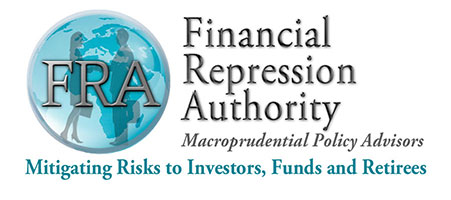
 04/30/2018 - The Roundtable Insight: Nomi Prins & Yra Harris On How Central Bankers Control Markets & Dictate Economic Policy
04/30/2018 - The Roundtable Insight: Nomi Prins & Yra Harris On How Central Bankers Control Markets & Dictate Economic Policy